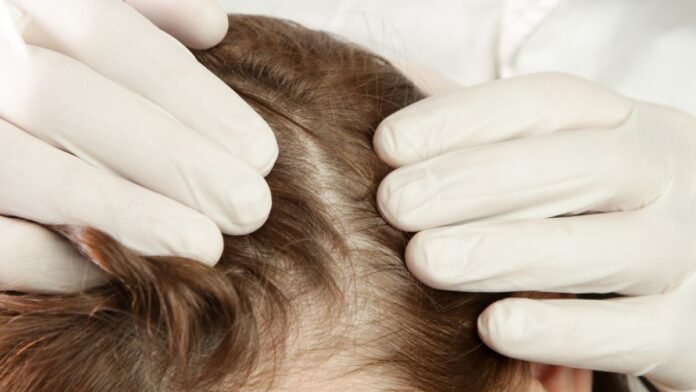My hair isn’t growing…sniff, sniff. How many times have you heard this sentence and particularly from girls with frizzy or curly hair. And yet, can hair really stop growing? Examine the life stages of hair and hair care tips
Behind this hides more impressions and received ideas than a biological truth. Indeed, hair grows (yours too at this very moment), only they don’t all grow in the same way or at the same speed from one type of hair to another, from one individual to another.
Our hair is constantly renewed, its life cycle is on average 3 years for men and 4 to 6 years for women. During this period, each hair grows unabated. One he finished, then he is directly renewed. So why does my hair feel stagnant?
The life stages of hair
The life of a hair is divided into 4 phases:
1. THE ANAGEN PHASE
Growth phase that lasts between 2 and 6 years, depending on sex and individuals. During this phase, the hair grows actively: the growth of its keratin is constant and regular.
2. THE CATAGENAN PHASE
Breaking duration is between 15 to 20 days.. The hair is surviving. Its root gradually rises towards the epidermis. Hair growth stops but it stays in place.
3. THE TELOGEN PHASE
Resting phase of the hair that lasts 2 to 4 months. The hair is inactive and ready to fall out. It will stay in place until the root of its replacement is strong enough to dislodge it.
4. FALL
The new hair comes to the surface of the scalp, the old one falls out naturally.
THEN NEW ANAGEN PHASE
The cycle starts again from the beginning: the new hair begins to grow.
The genetically programmed number of hair cycles varies between 25 and 30 in total, for a lifetime. However, the smooth running of this cycle can be influenced by many genetic, hormonal, nutritional or emotional factors. This is what can give the impression of having hair that grows more slowly or of having hair that falls out more.
Silence grows…but not very quickly!
- Frizzy hair is by nature a fragile hair that must be pampered and handled with delicacy. It is dry and fragile, it is not a defect, it is quite simply its nature.
- Frizzy hair follicles are fragile and tear out easily. Frizzy hair grows slower than smooth hair: 0.9 cm/month on average, compared to 1.3 cm for Asian hair and 1.2 cm for Caucasian hair.
- Of course, these are only averages, because the speed of hair growth also varies according to age, seasons and certain hereditary factors.
- Okay, but are there ways to accelerate hair growth?
- As you will have understood, patience is the most precious ally when it comes to frizzy hair. Nevertheless, there are good practices and treatments that you can adopt to promote faster hair growth.
Hair Care Tips
Stop pulling my hair!
Avoid hairstyles that choke or pull excessively on your hair, as this promotes breakage and impairs the blood micro-circulation necessary to transport nutrients to the hair. Remember to massage your scalp regularly in small circular movements with your fingertips, from the bottom of the head to the front (during and between treatments).
Ditch the tight-toothed combs and don’t detangle your dry hair. Instead of a brush and a fine comb, prefer your fingers if possible, otherwise opt for a wide-tooth afro comb. In addition, when styling, always untangle your hair from the tips by going up little by little: gather in one hand each portion of hair in a ponytail and comb the long part in order to avoid pulling a maximum on the roots. You will quickly observe less breakage.
Cut your ends. Remember to cut your damaged tips at least once a year. It will not make your hair grow any faster as there is no impact on the scalp. On the other hand, it will allow you to have less breakage and therefore retain more length and volume.
Be sure to eat a balanced diet and drink plenty of water. Just like the skin, the hair is also nourished and hydrated thanks to the substances that you ingest (iron, zinc, fatty acids, antioxidant, glucose, vitamin B8, water). So take care to provide your body with all the nutrients and vitamins it needs.




